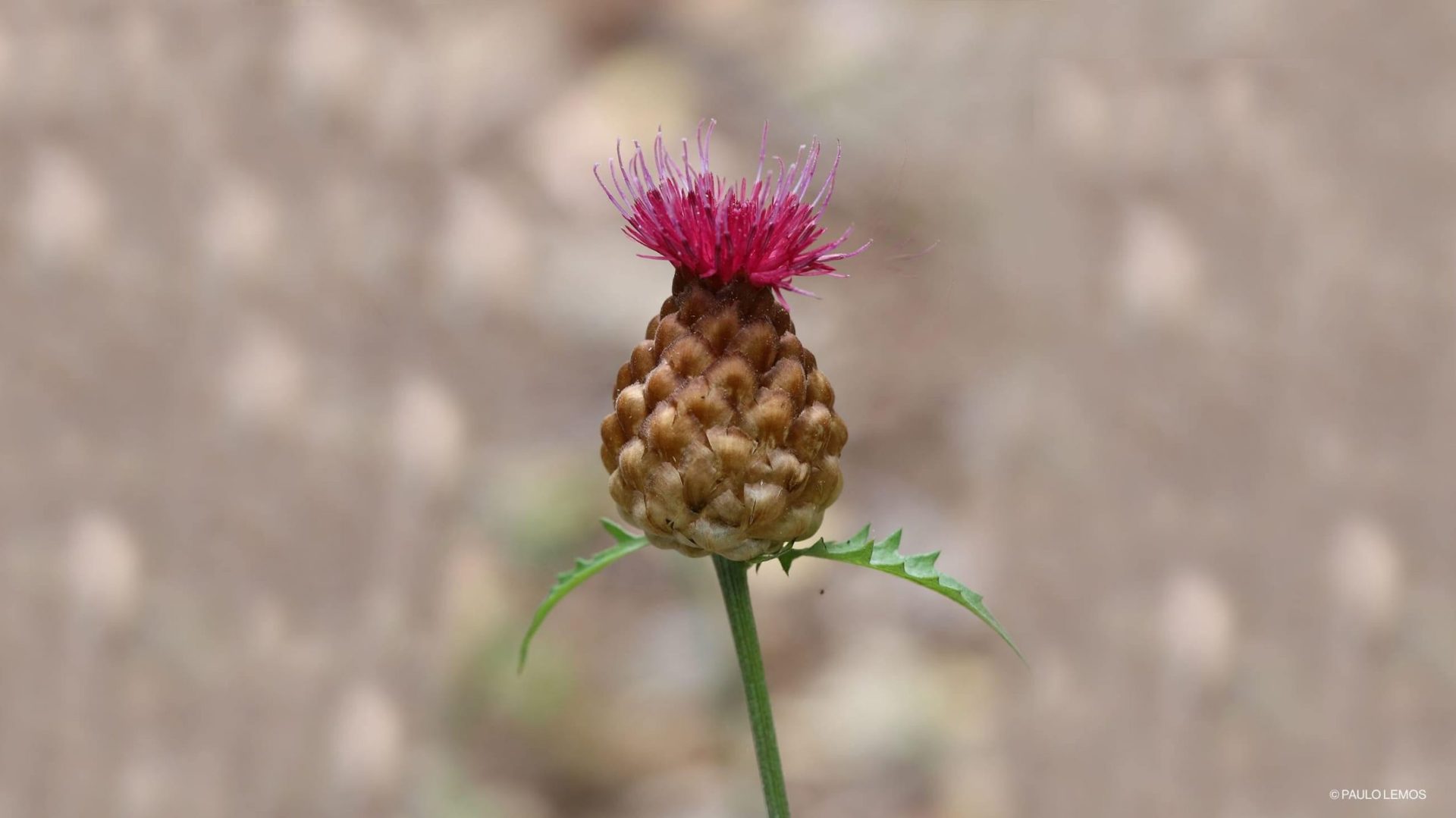Rare and little known, Rhaponticum exaltatum, which was formerly known as Leuzea rhaponticoides, is a “Critically Endangered” plant species in Portugal. It was previously thought to be confined to a small area in Trás-os-Montes, but in 2022 it was discovered in the forests managed by the Navigator Company in Penamacor by a team from Floradata.
At the end of the 20th century, small groups of Rhaponticum exaltatum were identified in the far north-east of the Trás-os-Montes region, between Vimioso and the Serra de Montesinho. They were seen near a slope near a temporary water line, between an exotic coniferous forest (Pseudotuga menziesli) and cistus thickets, on the side of a path under the canopy of pine and chestnut trees, and in clearings of mixed oak, pine, and chestnut woodlands.
This region in the far north-east of Portugal is home to the only sites of this rare species, which is endemic to the Iberian Peninsula and Morocco; in other words, it only exists naturally in those locations.
The work done for the Red List of the Vascular Flora of Mainland Portugal between 2016 and 2019 confirmed this limited presence, as well as its diminutive area and extent of occupation. It was also noted that many of the specimens had no flower stalk, an indication of the difficulties involved in reproducing. With only a hundred or so mature specimens concentrated in a single subpopulation, this list has classified the species in the highest extinction threat category: “Critically Endangered” in Portugal.
Good news came in June 2022 with the discovery of a new population core for this plant which, due to how rare it is, does not even have a common name. The identification of Rhaponticum exaltatum was made by a team from Floradata, an environmental consultancy firm carrying out fieldwork as part of the monitoring of natural values that The Navigator Company carries out annually on the properties it manages.
This Rhaponticum exaltatum cluster was found in Penamacor (in the central inland region of Portugal) and, although the discovery does not alter the extremely high risk of extinction of the species in nature, it does indicate the existence of specimens that have germinated in recent years and of plants in flower. And the fact that this cluster “is close to the species’ geographical distribution hub in Spain brings some hope for its future in Portugal”, adds Paulo Alves of Floradata.
The period during which they were spotted coincided with the flowering season of Rhaponticum exaltatum, which takes place between June and July, but lasts only a very short time – about a week. On these days, the species stands out amidst the green of the forest owing to the beauty of its colours. It has a golden bract that protects the flower and its inflorescences boast pink nuances that range from intense pink tones to a pale pink that is almost white. However, this is not the only distinguishing feature of Rhaponticum exaltatum: its slender stem can rise to an unusual height for a herbaceous plant—up to 1.4 metres.





